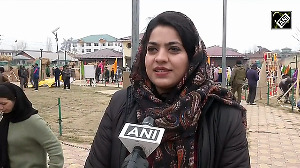 The Multi Commodity Exchange plans to offer co-location facility to its broker members, which will allow them to host servers near the exchange's trading platform, facilitating faster trades.
The Multi Commodity Exchange plans to offer co-location facility to its broker members, which will allow them to host servers near the exchange's trading platform, facilitating faster trades.
This was the first time a leading commodity exchange had shown an interest in offering co-location to its members in India, vendors familiar with the matter said.
The MCX has over 85 per cent share of the commodity futures market. However, the plan is at a preliminary stage, according to sources.
An MCX spokesperson said, "We cannot comment on market rumours and speculations. We deny having any such plan."
Forward Markets Commission chairman B C Khatua said he was not aware of such a move and the regulator had not been approached by the exchange so far.
A co-location facility is a data centre with racks for computer servers, which helps in execution of high-frequency trades.
Globally, prominent commodity bourses like the Chicago Mercantile Exchange, the Liffe and the Tokyo Commodity Exchange provide this facility.
In India, the country's two premier stock exchanges -- the National Stock Exchange and the Bombay Stock Exchange -- provide co-location to their members.
The main objective is to reduce latency in connections with the trading system, especially for electronic trading facilities like direct market access and algorithmic trading.
High-frequency trading through co-location is catching on in India. NSE was the first exchange to offer this to its members in August 2009, while BSE started it early this year.
At present, about two per cent of equity volumes in India come through high-frequency trades, as compared with over 70 per cent in the US.
For a co-location facility, NSE charges Rs 20 lakh (Rs 2 million) per rack and an annual fee of Rs 250,000 for information technology services.
For a half rack, it charges Rs 850,000 plus a Rs 150,000 annual fee. The exchange also charges a one-time initial set-up fee of Rs 100,000 and Rs 50,000 for full and half-racks, respectively.










 © 2025
© 2025